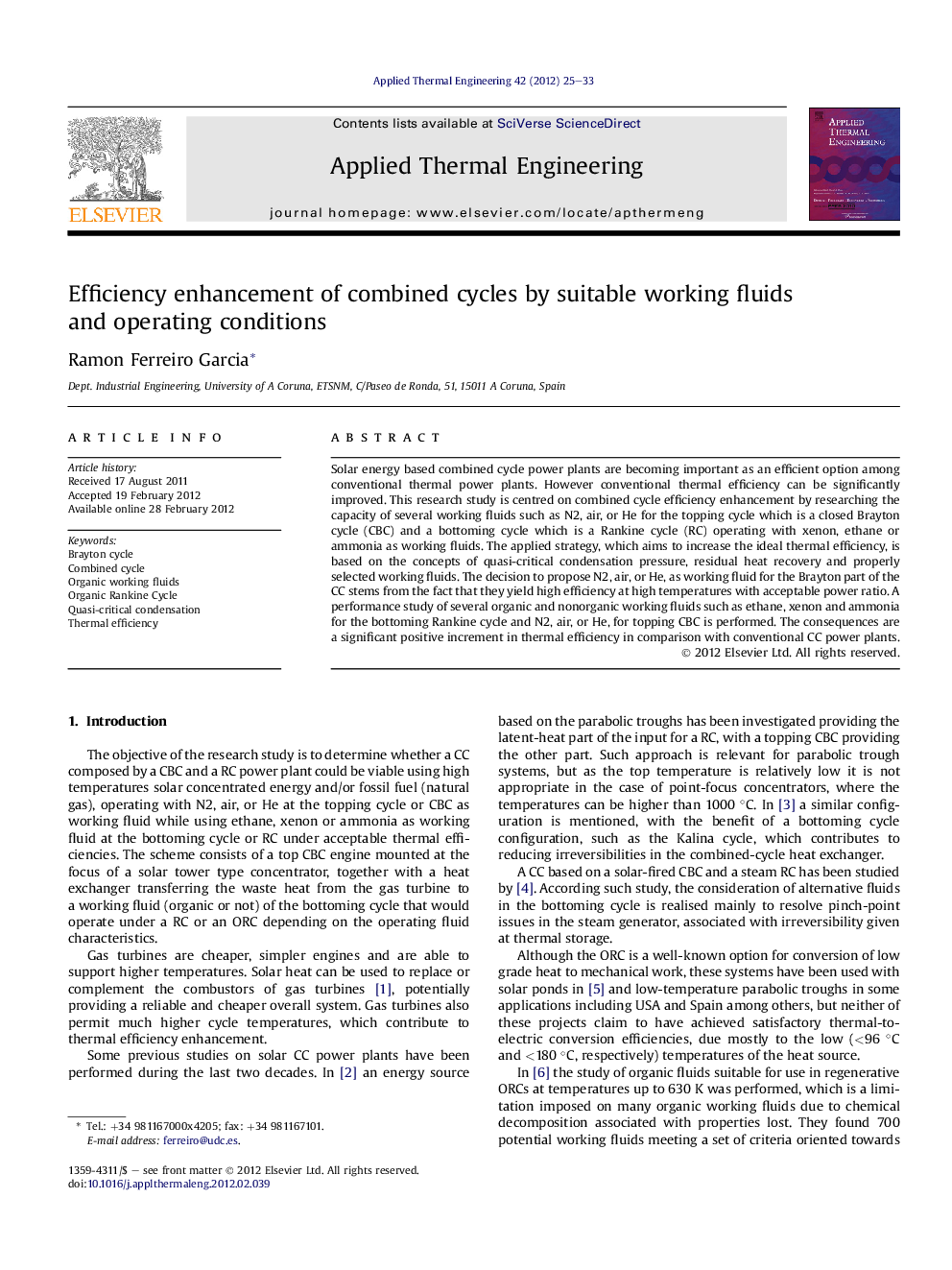| Article ID | Journal | Published Year | Pages | File Type |
|---|---|---|---|---|
| 647103 | Applied Thermal Engineering | 2012 | 9 Pages |
Solar energy based combined cycle power plants are becoming important as an efficient option among conventional thermal power plants. However conventional thermal efficiency can be significantly improved. This research study is centred on combined cycle efficiency enhancement by researching the capacity of several working fluids such as N2, air, or He for the topping cycle which is a closed Brayton cycle (CBC) and a bottoming cycle which is a Rankine cycle (RC) operating with xenon, ethane or ammonia as working fluids. The applied strategy, which aims to increase the ideal thermal efficiency, is based on the concepts of quasi-critical condensation pressure, residual heat recovery and properly selected working fluids. The decision to propose N2, air, or He, as working fluid for the Brayton part of the CC stems from the fact that they yield high efficiency at high temperatures with acceptable power ratio. A performance study of several organic and nonorganic working fluids such as ethane, xenon and ammonia for the bottoming Rankine cycle and N2, air, or He, for topping CBC is performed. The consequences are a significant positive increment in thermal efficiency in comparison with conventional CC power plants.
► N2, air or He for the topping Brayton cycle. ► Xenon, ethane or ammonia for Rankine bottoming cycle. ► Good coupling between N2, air or He and Xe C2H6 or NH3 working fluids. ► High thermal efficiency combined cycle, approaching 75%.
